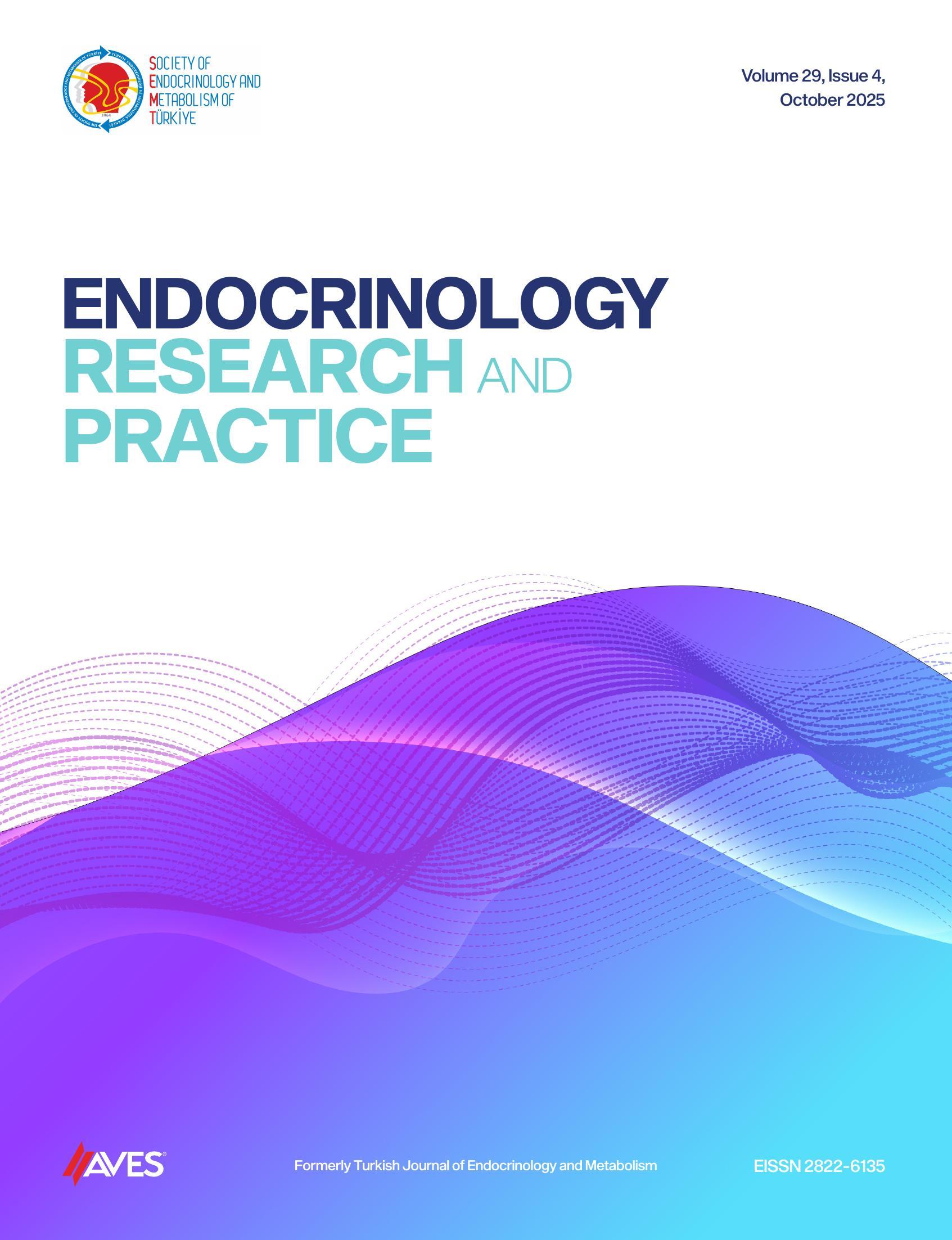ABSTRACT
Thirty children with insulin dependent diabetes mellitus age ranging from 7-19 years, were evaluated for hypercalciuria and hyperphosphaturia. The relationship of hypercalciuria metabolic control and duration of diabetes were shown in IDDM. In our patients the age of onset of diabetes varied from 6 to 14 years and duration of diabetes varied from 2 to 10 years. In this study, there were 15 male and 15 female patients with a mean age of 13.5±3.1. All children were receiving insulin therapy. None had diabetic nephropathy, proteinuria, albuminuria or any other renal disease and all serum creatinine levels were normal. Each patient's diabetic control was performed by fasting taking a blood sample of serum glucose and HbA 1C. Metabolic control was evaluated with parathormone (PTH), osteocalcine, serum calcium, phosphorus, 24 hour urinary calcium, phosphorus and tubular phosphate reabsorption (TPR). Hypercalciuria was defined as 24 hr urine calcium excretion of more than 4 mg/kg/day. In 20.68% of the patients hypercalciuria was determined. The serum calcium, phosphorus and alchalen phosphatase (ALP) levels in diabetic children with hypercalciuria did not differ from the levels found in those children with normal calcium excretion. PTH values were within normal ranges for all the patients. No significant correlation was found between duration, onset of diabetes, PTH, osteocalcine, ALP, TPR levels and urinary excretion of calcium. Tubular phosphate reabsorption was found above 85% in 26.66% of the subjects. A significant difference was defined between normocalciuric and hypercalciuric subjects for the values of TPR (p<0.05). We revealed that the percentage of hypercalciuria and hyperphosphaturia is increased in IDDM. Metabolic control, onset and duration of diabetes did not have any influence on hypercalciuria.
Thirty children with insulin dependent diabetes mellitus age ranging from 7-19 years, were evaluated for hypercalciuria and hyperphosphaturia. The relationship of hypercalciuria metabolic control and duration of diabetes were shown in IDDM. In our patients the age of onset of diabetes varied from 6 to 14 years and duration of diabetes varied from 2 to 10 years. In this study, there were 15 male and 15 female patients with a mean age of 13.5±3.1. All children were receiving insulin therapy. None had diabetic nephropathy, proteinuria, albuminuria or any other renal disease and all serum creatinine levels were normal. Each patient's diabetic control was performed by fasting taking a blood sample of serum glucose and HbA 1C. Metabolic control was evaluated with parathormone (PTH), osteocalcine, serum calcium, phosphorus, 24 hour urinary calcium, phosphorus and tubular phosphate reabsorption (TPR). Hypercalciuria was defined as 24 hr urine calcium excretion of more than 4 mg/kg/day. In 20.68% of the patients hypercalciuria was determined. The serum calcium, phosphorus and alchalen phosphatase (ALP) levels in diabetic children with hypercalciuria did not differ from the levels found in those children with normal calcium excretion. PTH values were within normal ranges for all the patients. No significant correlation was found between duration, onset of diabetes, PTH, osteocalcine, ALP, TPR levels and urinary excretion of calcium. Tubular phosphate reabsorption was found above 85% in 26.66% of the subjects. A significant difference was defined between normocalciuric and hypercalciuric subjects for the values of TPR (p<0.05). We revealed that the percentage of hypercalciuria and hyperphosphaturia is increased in IDDM. Metabolic control, onset and duration of diabetes did not have any influence on hypercalciuria.

-1(1).png)

.png)